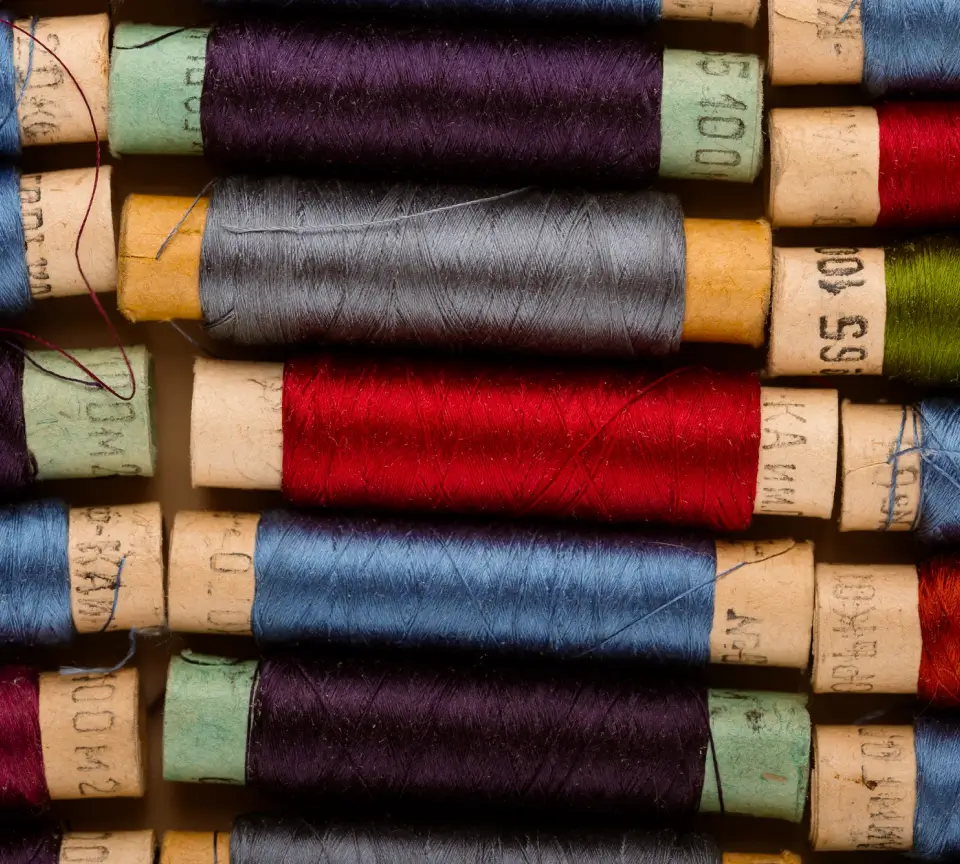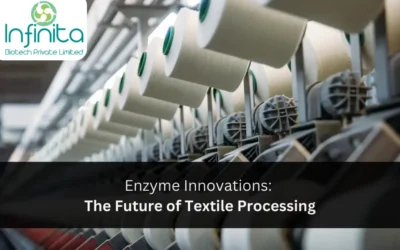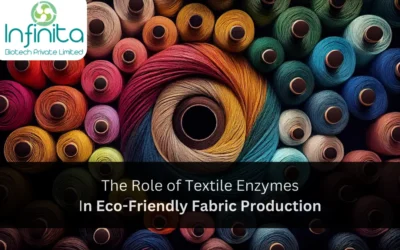Top 3 Uses Of Enzymes In The Textile Industry
Enzymes are biocatalysts and are utilized in a few modern procedures since the nineteenth century. Utilization of enzymes in the textile industry is a case of an industrial revolution. Enzymes, as a result of their non-lethal and eco-friendly attributes, have increased applications in the textile industry. Not only are they profoundly specific, effective and work under mild conditions yet, in addition, but they also help diminish process times, spare energy and water, improve nature of the item and decrease contamination. Thus they are quickly increasing worldwide acknowledgement as a significant prerequisite for the textile industry.
Commercially enzymes can be acquired from three essential sources, animal tissues, plants and microorganisms. Nonetheless, these naturally occurring proteins are not made in adequate amounts to be promptly utilized in modern applications. Thus, microbial strains creating the ideal catalyst are refined and streamlined for example fermentation, to acquire chemicals in adequate amounts for their business use in the textile industry. The catalysts utilized in the textile business are amylases, cellulases, pectinases, lipases, catalases, proteases, xylanases and so on and are essentially utilized for processing of the materials, for example, preparatory and finishing of the products. A portion of the applications incorporates expelling of starch, bleaching, corrupting lignin, fading of denim and non-denim, the expulsion of peroxidises, finishing of fleece, decolouration of dyestuff, bio-scouring, bio-cleaning, fleece completing, and so forth.
Properties Of Enzymes Used In The Textile Industries:
- Enzymes accelerate rates of reactions by lowering the activation energy. They also remain intact at the end of the reaction which means that they can be used again. This makes them economically viable.
- Enzymes operate under milder conditions.
- Enzymes can be utilised as alternatives to toxic hazardous and polluting substances.
- They only catalyse specific reactions i.e. one or two substrates. Therefore the enzymes used in desizing do not react with cellulose which does not lead to the loss of the strength of the cotton.
- They are easy to control as they have specific optimum temperatures and pH.
- They are biodegradable and when reactions are complete they can simply be drained as they won’t produce any toxic materials.
Role Of Enzymes In The Textile Industry:
Utilization of biocatalysts in different textile processing forms has extraordinarily profited the textile business concerning both e environmental effect and quality of the item. There are 7000 known chemicals, yet just 75 are industrially utilized in the textile business and the vast majority of them have a place with hydrolases and oxidoreductases families. The hydrolases family incorporates amylases, cellulases, pectinases, proteases, catalases and lipases/esterases and oxidoreductase family incorporate laccase, peroxidase.
1. Amylases:
Amylases act on starch atoms and hydrolyse to give dextrin and little polymers of glucose units. These are grouped by the sugars they create for example α-amylases and β-amylases. α-Amylases being created from filamentous parasites and microbes are for the most part utilized in industries. These biocatalysts are steady over a wide scope of pH from 4-11 and ideal action is identified with the development states of the source microorganisms. All in all, α-Amylases show’s high particularity towards starch followed by amylase, amylopectin, cyclodextrin, glycogen and maltotriose.
Application: Textile Desisizng:
Size is a sticky substance used to cover the wrapping threads utilized in the weaving of the fabrics produced using cotton or blend. Starch and its subsidiaries are comprehensively used to size fabrics because of their simple accessibility, relatively low cost and fantastic film producing limit. Amylases are utilized to expel this sizing material and set up the fabric for dyeing and wrapping up. Prior to the discovery of amylases, desizing was finished by compound treatment of texture with corrosive, salt or oxidizing specialists at high temperature. Be that as it may, this procedure was wasteful in expelling the starch which brought about defects in colouring and furthermore corruption of cotton fibre. Amylases are commercially utilized for desizing texture because of its efficiency and explicitness and its viability in totally expelling the size without influencing the fabric. Starch is evacuated during washing as water dissolvable dextrin and subsequently diminishes the release of chemical waste into the environment.
2. Cellulases:
Cellulases are the hydrolytic compounds that catalyze the breakdown of cellulose to littler oligosaccharides and lastly to glucose. These chemicals are usually created by soil-abiding growths and microbes, for example, Penicillium, Trichoderma and Fusarium and shows ideal movement in temperature go from 30C-60C. The utilizations of cellulases in the textile business start in the late nineteenth century with denim finishing. This alone represents 14% of the world’s modern chemical market.
Application: Denim Fishing:
Denim is a high-quality cotton and its washing is done so as to give a well-used look, for example, stone washing of denim pants, in which the denim texture is faded utilizing sodium hypochlorite or potassium permanganate are utilized as pumice stones and this has brought about harm to the texture and machine. The commercial production of cellulases has expanded the efficiency without influencing piece of clothing or the machine. Cellulases hydrolyses the uncovered surface of coloured (indigo) texture leaving the insides unblemished, incomplete hydrolyses of the surface outcomes in the expulsion of colour and leaves a light area. The greater part of the cellulases are created from fungi, however, cellulases from bacterial and actinomycetes source are currently concentrated as to its utilization in bio-stoning of denim. Cellulases utilized for washing of the denim can be additionally ordered based on ideal pH required for its greatest productivity; as neutral cellulases working at pH 6-8 and acidic cellulases acting at pH 4.5-6.
Bio Finishing:
Washing of cotton and other natural and man-made cellulosic textures, other than denim, for example, linen, hemp, rayon and viscose by the enzymatic movement of cellulases to improve the final appearance is finished by bio-completing or bio-cleaning forms. The procedure helps in forestalling the arrangement of wads of fluff called pill on the outside of the article of clothing, this development, for the most part, brings about ugly, knotty texture appearance. Cellulases hydrolyse the microfibrils distending from the outside of the texture which will, in general, sever leaving a smoother surface. Bio-finishing might be a discretionary advance for redesigning cotton textures yet is a significant advance in anticipation of pilling or fibrillation during completing of lyocell textures. Essentially, cellulases can be utilized for gooey kind recovered celluloses like thick and modular. The employments of ultrasound as an effective method to improve the enzymatic action in bioprocessing of cotton.
Because of continually increasing levels of toxins, legislatures of numerous nations are enforcing stricter restrictions on the release of toxins into the environment. In this manner, there is consistently expanding interest for clean procedures for example processes which either cause no contamination or less contamination. Textile industry especially the chemical processing division consistently has a significant offer in the worldwide contamination. Catalysts assume a key job in such elective procedures. Utilization of proteins in material began up to a century prior. Today enzymes have become a fundamental piece of the textile processing. There are two well-established biocatalyst applications in the textile business. Initially, in the preliminary finishing area amylases are regularly utilized for desizing process and furthermore, in the finishing area cellulase are utilized for softening, bio-stoning and decreasing of pilling affinity for cotton products. At present, uses of pectinases, lipases, proteases, catalases, xylanases and so on., are utilized in material handling.







